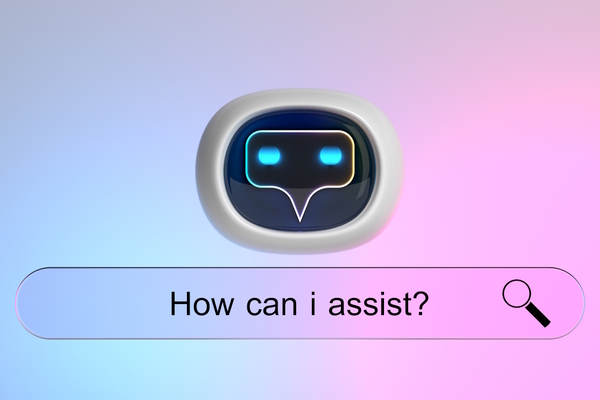Making hybrid working work

Sanj Bhayro at Asana argues that poor hybrid work strategies are at risk of moving businesses backward
For most, a hybrid set-up is now an established part of modern working. Despite this, many businesses continue to struggle to integrate a constructive hybrid model that enables teams to work effectively both in the office and at home.
In fact, Asana’s Anatomy of Work Index revealed that in the UK, 60% of workers’ days are being used up on ‘work about work’ - work coordination tasks such as chasing for status updates and unnecessary meetings. Whilst this can partly be attributed to businesses overcompensating from reduced contact time in offices, the result is simply less time to focus on the work that matters.
During a period of severe economic headwinds and worker shortages, businesses simply cannot afford to implement poor hybrid work strategies which risk moving businesses backwards. For business leaders, getting this right will be fundamental to enterprise success in 2023 and beyond.
Businesses are still struggling to get hybrid right
Disjointed and misguided hybrid policies have a knock-on effect on workers’ productivity, as well as the overall output of a business. Workers in organisations with a mismanaged hybrid policy tend to suffer from a lack of clear communication, both from senior figures and across teams, which impacts their ability to contribute valuable focused work.
What has often been shoe-horned as an effective communication strategy is the increase in team meetings throughout the week. This indiscriminate approach to meetings - potentially attributed to overcompensation for reduced in-person contact time - has only meant that UK workers are losing nearly three hours a week to unnecessary meetings, according to the Anatomy of Work data.
Businesses have also been guilty of also overindulging in their tech stacks as a solution to encourage productivity and communication, but this is not often thoughtfully considered. As a result, workers are overwhelmed with too many apps, several of which are not particularly relevant. Our research highlighted how 17% of workers using 16 or more apps are missing messages and actions amidst a problematic notification overload.
This year’s Anatomy of Work revealed that UK workers could save nearly five hours a week by improving processes — the equivalent of more than six working weeks across a year. Getting the right approach to hybrid is a key part in achieving this.
Why hybrid strategies are failing
The immediate and abrupt transition to hybrid working in 2020 was understandably difficult for many businesses, and recent research conducted by Asana’s think tank on the future of work, the Work Innovation Lab, has sought to uncover the reasons why hybrid strategies continue to stall.
Three main causes were revealed:
- A rushed rollout - Workers didn’t understand why a hybrid policy was developed and were left unsure as to why they were being asked to follow certain guidelines. For instance, why business leaders required workers to be in the office on Wednesdays but not Thursdays.
- Lack of supporting data - There is an uncertainty among workers as to how hybrid policies have been designed, with almost one-third of respondents (32%) unsure what data was used to inform a company’s policy decision.
- Confusing guidance - even post-rollout, nearly a quarter (24%) of workers did not know who had designed their hybrid work policy and less than 40% of respondents could find their hybrid work policy on their company’s intranet. A lack of formalisation of the policy was often frustrating to staff, especially those tasked with putting policies into practice
How to get back on track
We know the impacts of a poor hybrid strategy, and have some interesting early data on why these might come about. But most critically, business leaders need to know how to get their hybrid work strategies back on track.
Embracing experimentation often feels unnatural and many leaders might be afraid of change or making mistakes. But in reality, there is no one-size-fits-all approach. The focus of this experimentation should be around auditing meetings and tools - ultimately removing anything that causes productivity or communication blocks.
By doing so, teams can regain valuable time and cut down wasteful processes that lead to longer hours worked, with minimal impactful results.
For example, at Asana, we recently conducted a ‘Meetings Doomsday’ audit, with meetings not deemed valuable reduced in cadence or even deleted altogether - saving an average of 11 hours per month.. Of course, these kinds of experiments will require ongoing monitoring, adjustment and feedback from all employees, with audits such as this recommended at least once a year to re-evaluate key priorities.
Empowered with this information, leaders can build a reliable dataset to understand what will be the most effective way for their teams to work together.
Leaders should also seek to optimise collaboration as efficiently as possible. For example, by rethinking and redesigning their tech stacks to be focused on employee experience and business outcomes - strategically selecting only the tools that have the most impact.
After all, technology should decrease the coordination cost of work, not add to it, and having one work management platform (as opposed to a proliferation of apps) keeps everything in one place, reducing the need for endless ‘check-ins’ on who’s doing what.
It is important to remember that the goal shouldn’t just be more collaboration; it should be more collaboration where collaboration is necessary. For collaboration to work, it needs to be tactical.
The term “collaborative intelligence” refers to the ability of employees, teams, and organisations to understand how collaboration is happening and how it should happen. Though it is largely invisible, healthy and effective collaboration is the lifeblood of a connected business - especially in the modern era of hybrid work.
Taking the next step
Three years ago, hybrid working was implemented at breakneck speed. For a while, it worked. But time has passed and the world looks different once again. It would be foolish to assume a policy from 2020 will work in 2023. Business leaders must evaluate their current hybrid work strategy and ensure that it works across all members of the team.
Putting right a faulty hybrid policy will take time and a degree of experimentation, demanding complete buy-in from every member of the business right up to the C-suite. But it can be done, and organisations will reap the benefits of a refreshed and effective hybrid work policy - with estimates that improved processes could save workers more than six working weeks per year. In today’s market, that will make a world of difference.
Sanj Bhayro is Asana’s GM EMEA
Main image courtesy of iStockPhoto.com

Business Reporter Team
You may also like
Most Viewed
Winston House, 3rd Floor, Units 306-309, 2-4 Dollis Park, London, N3 1HF
23-29 Hendon Lane, London, N3 1RT
020 8349 4363
© 2025, Lyonsdown Limited. Business Reporter® is a registered trademark of Lyonsdown Ltd. VAT registration number: 830519543





